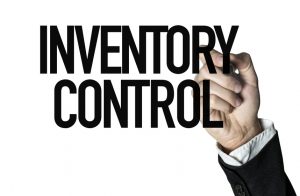 Inventory shrinkage is a constant threat in the retail sector, costing the U.S. retail industry over $45 billion every year. And considering that U.S. retailers are currently sitting on $1.43 in inventory for every $1 in sales they make, that translates to a significant issue. But it’s also a problem that impacts warehouses, government organizations, and virtually any enterprise that deals with inventory on some scale.
Inventory shrinkage is a constant threat in the retail sector, costing the U.S. retail industry over $45 billion every year. And considering that U.S. retailers are currently sitting on $1.43 in inventory for every $1 in sales they make, that translates to a significant issue. But it’s also a problem that impacts warehouses, government organizations, and virtually any enterprise that deals with inventory on some scale.
Our two-part series on inventory shrinkage will discuss some of the reasons this pervasive problem occurs and exactly what you can do to prevent it (including the use of inventory tracking software). This post will discuss exactly what inventory shrinkage is and what can cause it. Our second post will explain how you can stop inventory shrinkage and how inventory tracking software works.
What is inventory shrinkage?
In the simplest terms, inventory shrinkage refers to a discrepancy between the physical assets or inventory you actually have and what your records say you should have. It’s a loss of inventory that hasn’t been accounted for, like stock that cannot actually be sold to a customer or products that should be in your warehouse but have gone missing.
What are the main causes of inventory shrinkage?
Ultimately, inventory mismanagement is usually to blame for shrinkage. However, there are some specific contributing factors that can lead to inventory shrinkage.
- Theft: Although theft is often more problematic for retailers and warehouses, government inventory can be subject to theft, too. Unfortunately, employees or business associates could be involved. Government organizations are generally more likely to screen employees thoroughly prior to hiring, but that doesn’t mean insider theft is out of the question.
- Administrative inaccuracies: Although we all try our best, no one is perfect. Human error makes up a significant portion of inventory shrinkage, especially if you don’t have a comprehensive inventory tracking system in place. It could be a simple mistake (like a transposition of numbers or an unintentional omission), a case of vendor fraud, or an instance of using an ineffective property inventory system like a spreadsheet program. When these errors happen repeatedly, your operations could suffer as a result.
- Unexpected damage or accidents: Accidents and subsequent damage to inventory happen in many ways. Items can be crushed or dropped during transport, or they can be damaged due to a structural failure that exposes these items to the elements. Poor employee training and subpar property maintenance often cause damage and/or accidents of this nature, but they can happen unexpectedly too (as with natural disasters or unpreventable incidents). That said, taking every precaution can help to reduce the risk of an accident that results in inventory shrinkage.
- Lost items: Temporary misplacement or total loss of inventory can have a big effect on your organization. Usually, product loss can ultimately be attributed to human error or theft, but poor training can play a part, too. Inventory might get lost during transport, for example, if this action isn’t performed often or is done poorly. For example, moving your organization or warehouse’s location without a high-quality property inventory system in place could easily result in loss of inventory.
The truth is that inventory shrinkage is incredibly common. However, that doesn’t mean it should be a given. In our next post, we’ll discuss some ways you can minimize inventory shrinkage, like with inventory tracking software, and explain how these methods work.




